Today I will be presenting a brief overview of the 2024 Frogs collection by Toymany, which was kindly gifted as a review sample by @Kenc and the folks at Toymany for the Blog. This was intended to be posted yesterday when the set was announced, but I was traveling for work so it’s coming up a day late. Since the purpose of this post was to announce the set, this will be a very brief overview of each figure. We encourage others to submit in-depth reviews of individual figures. I am including geographic information, habitat, size and scale (based on snout-to-vent length, SVL), frequency of the species in toy/figure form for each species, and notes where appropriate.
Surinam Horned Frog, Ceratophrys cornuta
- Geographic distribution: Amazonian South America
- Habitat: Tropical and subtropical rain forest, usually in leaf litter
- Size/Scale: SVL approx. 4.3 cm for a scale of 1:1.7-1:2.8
- Frequency of species as a toy/figure: Unique
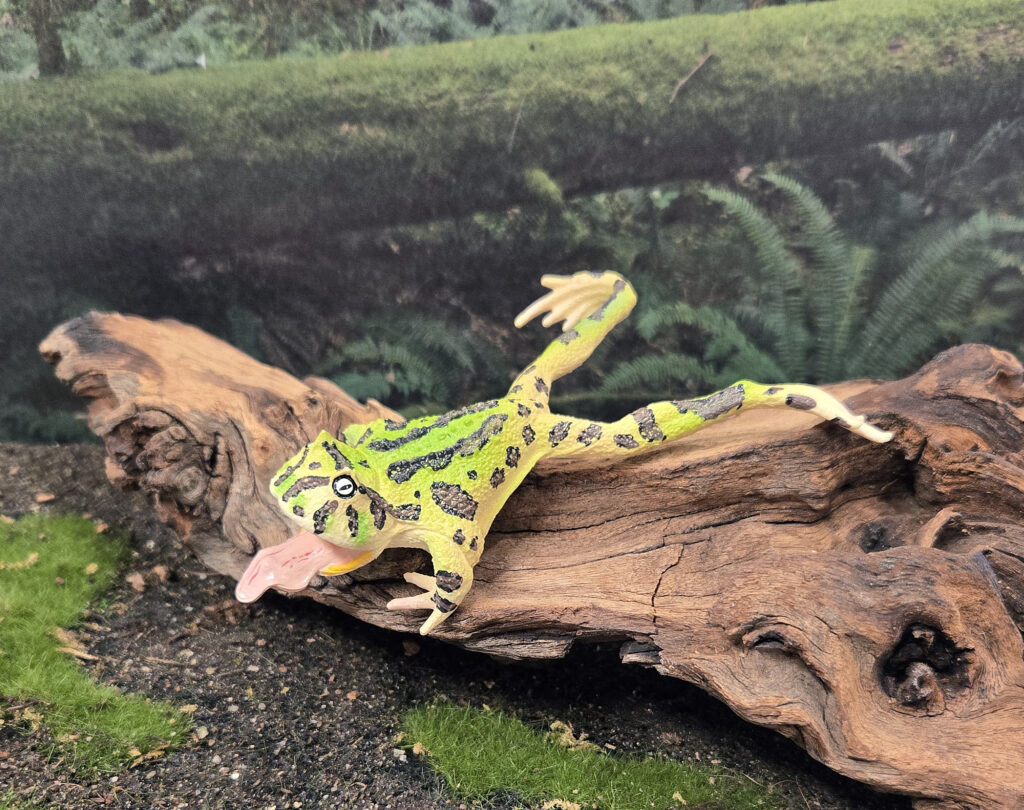
Wallace’s Flying Frog, Rhacophorus nigropalmatus
- Geographic distribution: Southeast Asia (Indonesia, Myanmar, Thailand, Malaysia)
- Habitat: Primary and secondary tropical rain forest; arboreal
- Size/Scale: SVL approx. 5.0 cm for a scale of 1:2
- Frequency of species as a toy/figure: Very rare; the only others I am aware of are by Blip Toys and Safari Ltd.
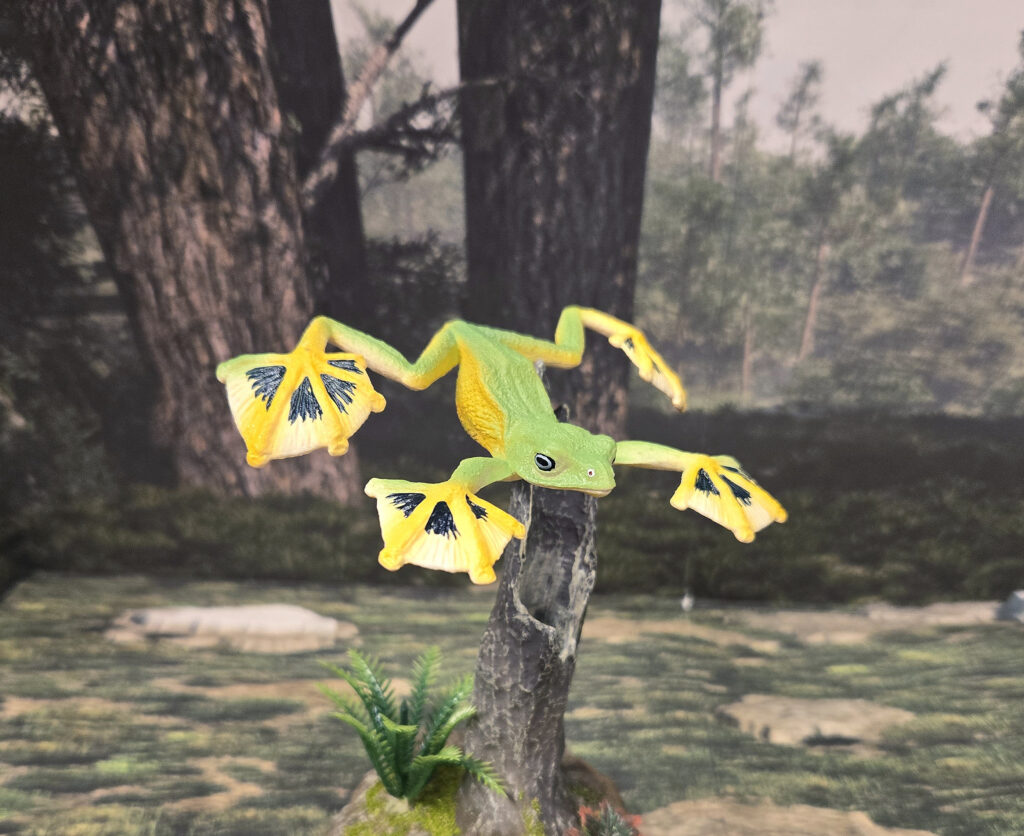
Australian Green Tree Frog, Ranoidea caerulea
- Geographic distribution: Northeastern Australia and New Guinea; introduced to New Zealand and USA (Florida)
- Habitat: Moist temperate, tropical, and subtropical forests, often near bodies of water; arboreal
- Size/Scale: SVL approx. 5.5 cm for a scale of 1:2.1
- Frequency of species as a toy/figure: Rare; certain examples have been made by Cadbury (both Australian and UK Yowies) and Kaiyodo, as well as possibly Safari Ltd.’s 2000 Incredible Creatures tree frog
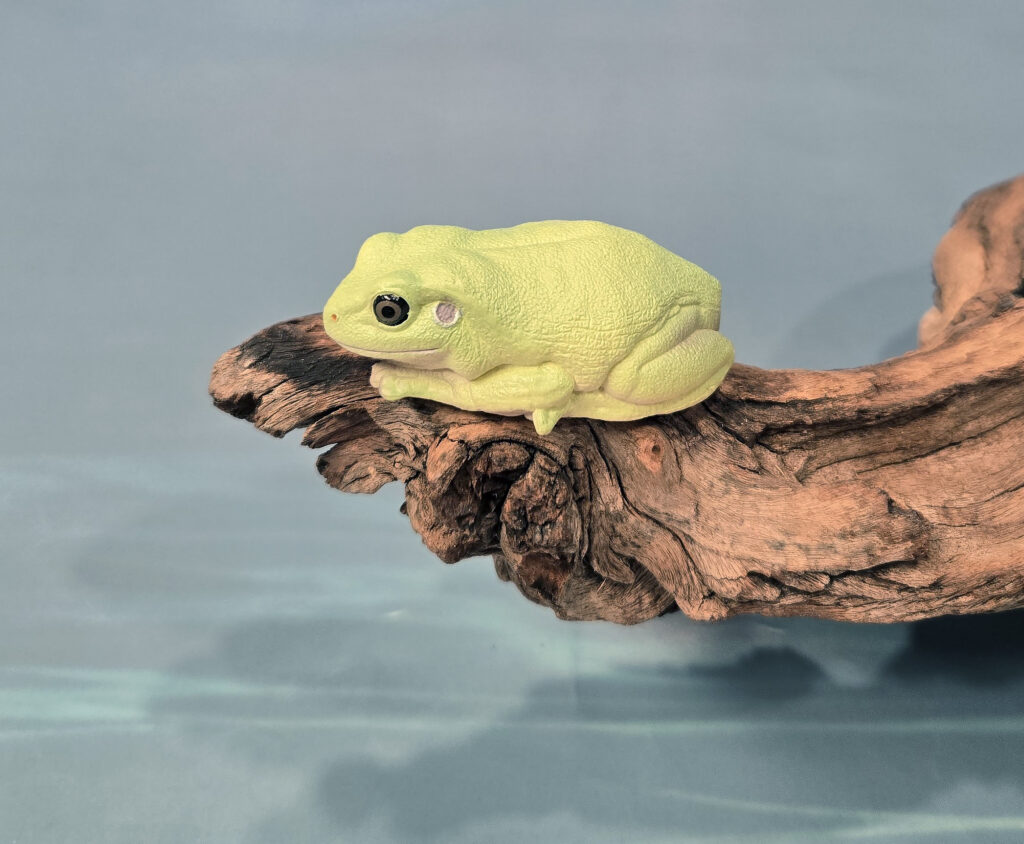
Argentine Horned Frog, Ceratophrys ornata
- Geographic distribution: South America (Argentina, Brazil, Uruguay)
- Habitat: Tropical and subtropical grassland, often near water; also irrigated cropland and ditches
- Size/Scale: SVL approx. 5.0 cm for a scale of 1:2.2
- Frequency of species as a toy/figure: Uncommon; most horned frog figures were probably based on this species
- Notes: This figure is painted as a domestic morphotype
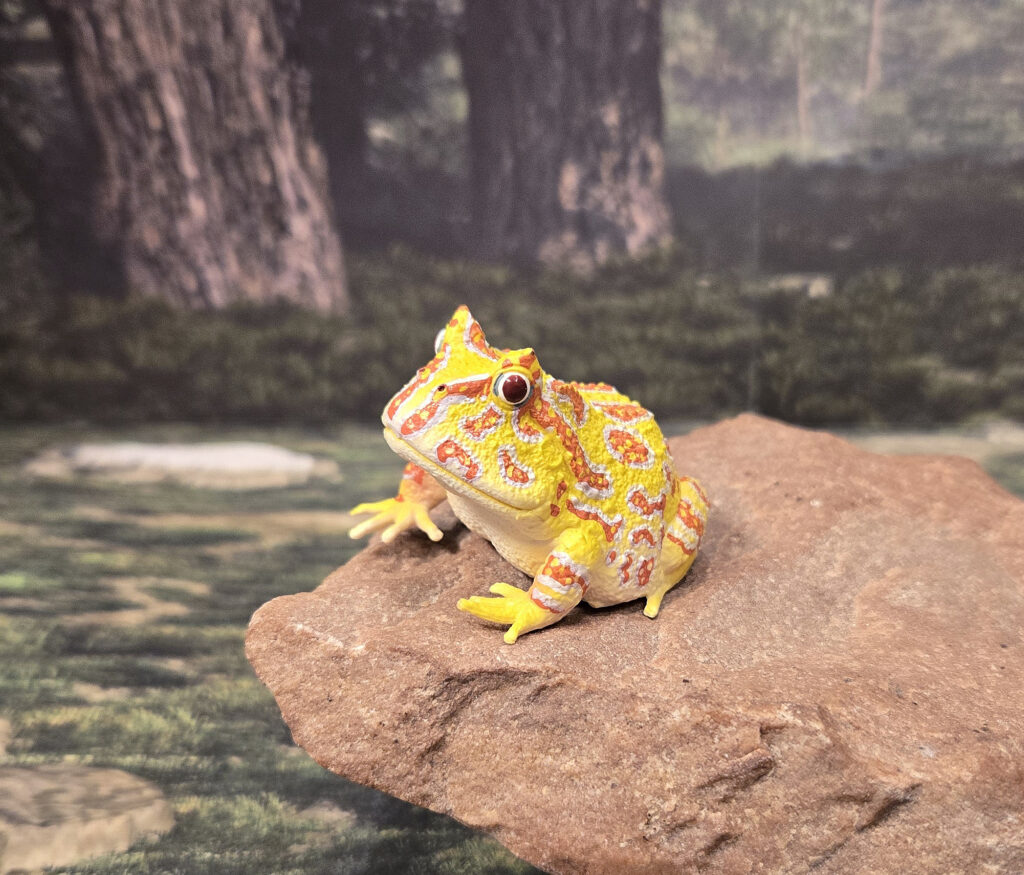
American Bullfrog, Lithobates catesbeianus
- Geographic distribution: Eastern North America; introduced throughout much of the world, including the western United States, Hawaii, Caribbean, South America, Central and Mediterranean Europe, East and Southeast Asia, Japan
- Habitat: Swamps, ponds, lakes, parks, koi ponds, canals, ditches, culverts
- Size/Scale: SVL approx. 5.5 cm for a scale of 1:2.8-1:2.9, depending on the sex
- Frequency of species as a toy/figure: Uncommon; most figures of this species have been made by Safari Ltd. and K&M International, but also Yujin and certainly others.
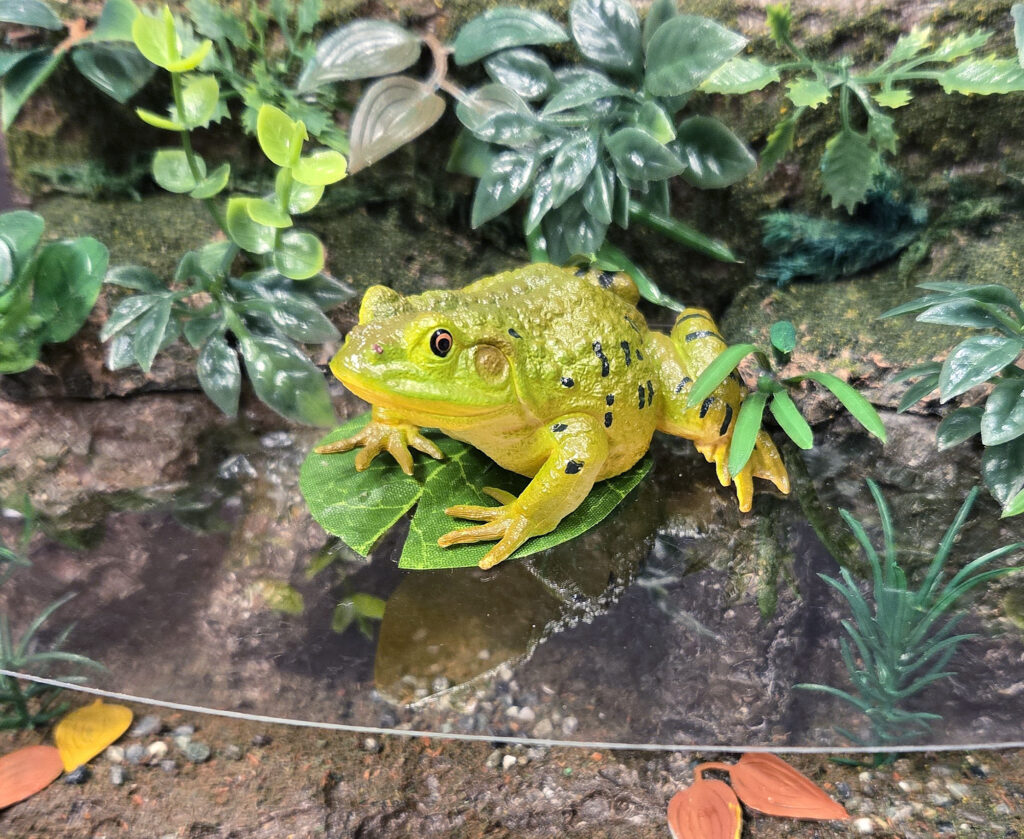
Strawberry Poison-dart Frog, Oophaga pumilio
- Geographic distribution: Central America, from Nicaragua to Panama
- Habitat: Rainforests along the Caribbean coast of Central America
- Size/Scale: SVL approx. 4.0 cm for a scale of 2.4:1-1.7:1
- Frequency of species as a toy/figure: Uncommon, but one of the most commonly made frogs identifiable at the species level, having been made by a handful of both Western and Japanese companies
- Notes: To the best of my knowledge, this is the only figure of this species sculpted calling
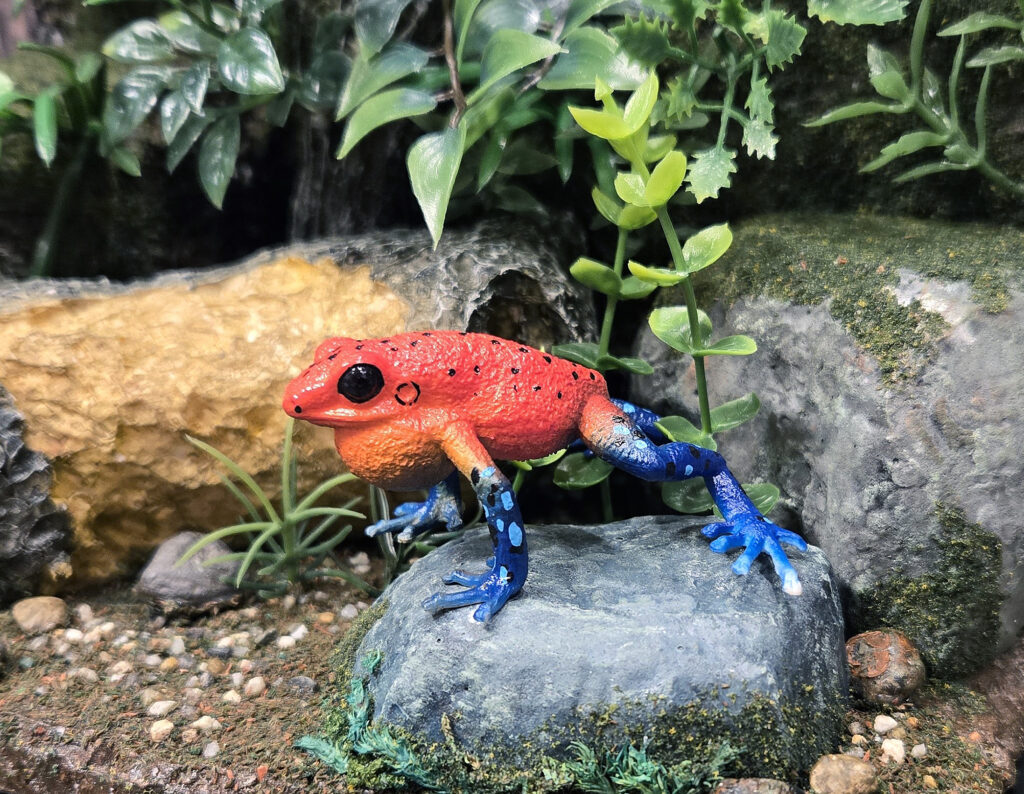
Red-eyed Tree Frog, Agalychnis callidryas
- Geographic distribution: Central and northwestern South America
- Habitat: Tropical and subtropical lowland and submontane rainforest
- Size/Scale: SVL approx. 5.0 cm for a scale of 1:1.2-1:1.5, depending on the sex
- Frequency of species as a toy/figure: Common, one of the most, if not the most, commonly made frogs identifiable at the species level, having been made by several Western and Japanese companies
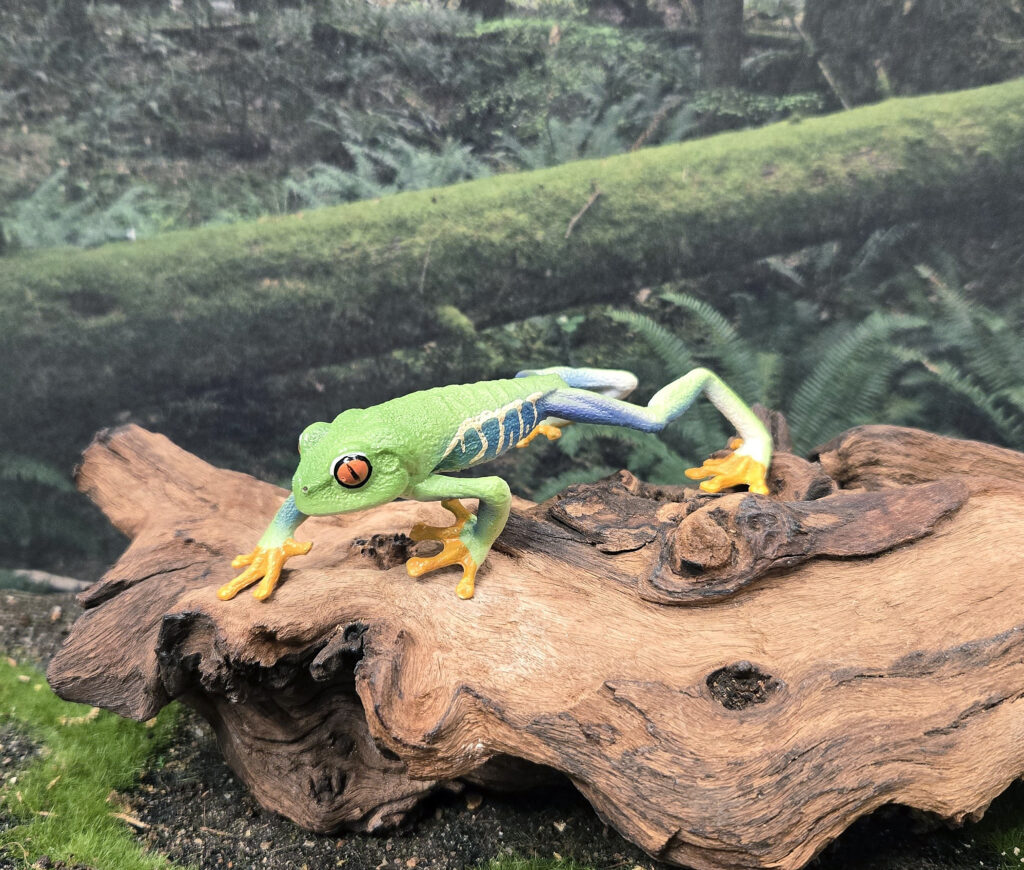
Budgett’s Frog, Lepidobatrachus laevis
- Geographic distribution: South America (Paraguay, Bolivia, Argentina)
- Habitat: Gran Chaco
- Size/Scale: SVL approx. 4.0 cm for a scale of 1:2.5
- Frequency of species as a toy/figure: Very rare, but gaining popularity with other figures by Ikimon and Yell, and other Japanese companies
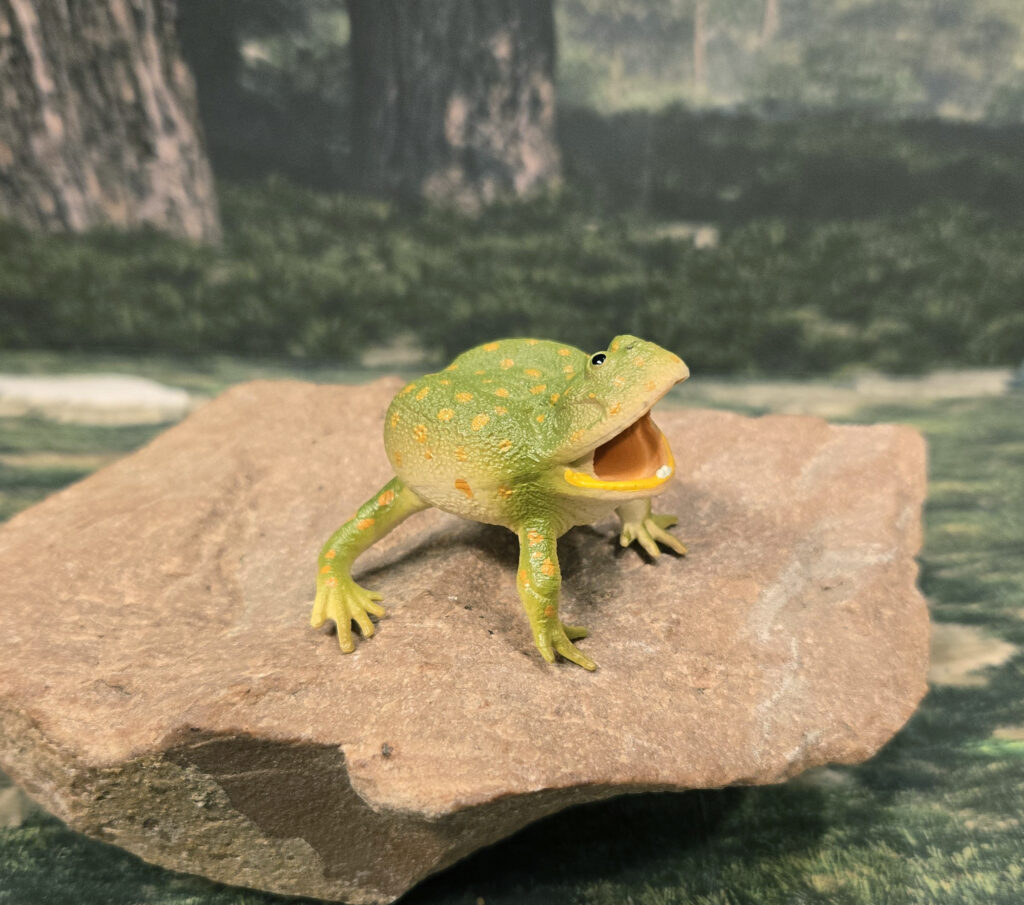
Lehmann’s Poison Frog, Oophaga lehmanni
- Geographic distribution: Western Colombia; known only from the type locality in the south-facing versant of upper Río Anchicayá drainage
- Habitat: Tropical rain forest; usually in leaflitter but occasionally in low shrubs and trees
- Size/Scale: SVL approx. 4.0 cm for a scale of 1.3:1-1.1:1
- Frequency of species as a toy/figure: Uncommon, but has been made by a handful of Western and Japanese companies
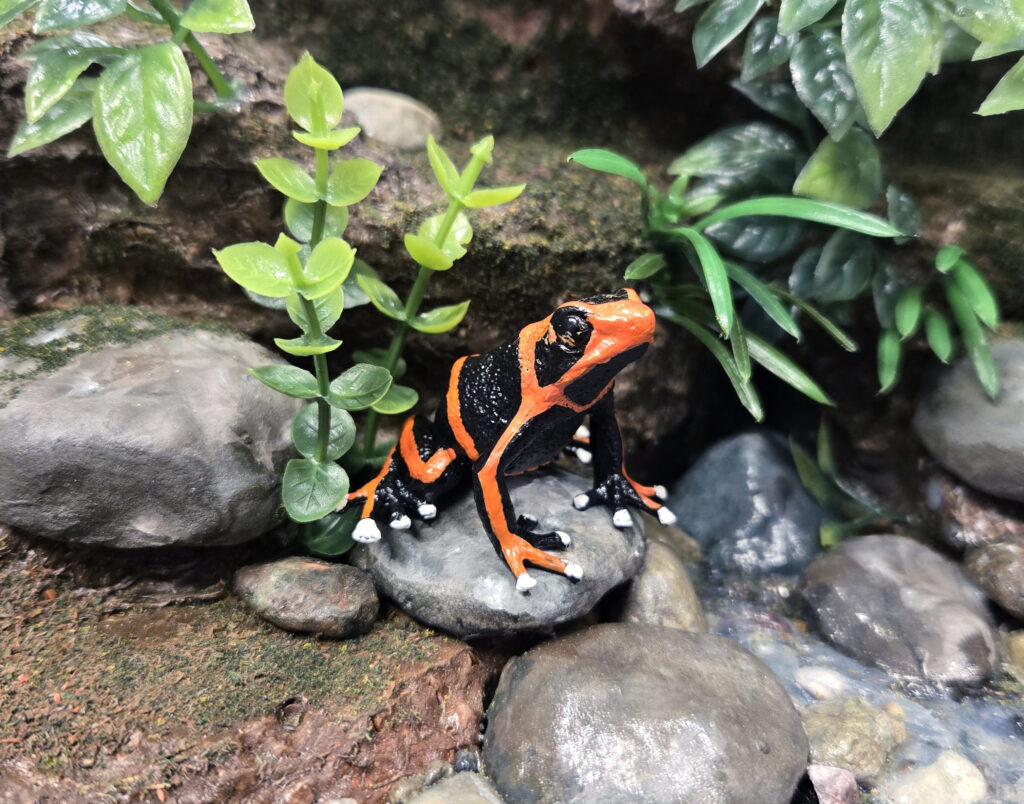
Darwin’s Frog, Rhinoderma darwinii
- Geographic distribution: South America (Argentina, Chile)
- Habitat: Valdivian Temperate Rain Forest
- Size/Scale: SVL approx. 4.2 cm for a scale of 1.9:1-1.4:1 depending on the sex
- Frequency of species as a toy/figure: Rare; other than the standard and mini/tube figures by CollectA, only a couple Japanese companies
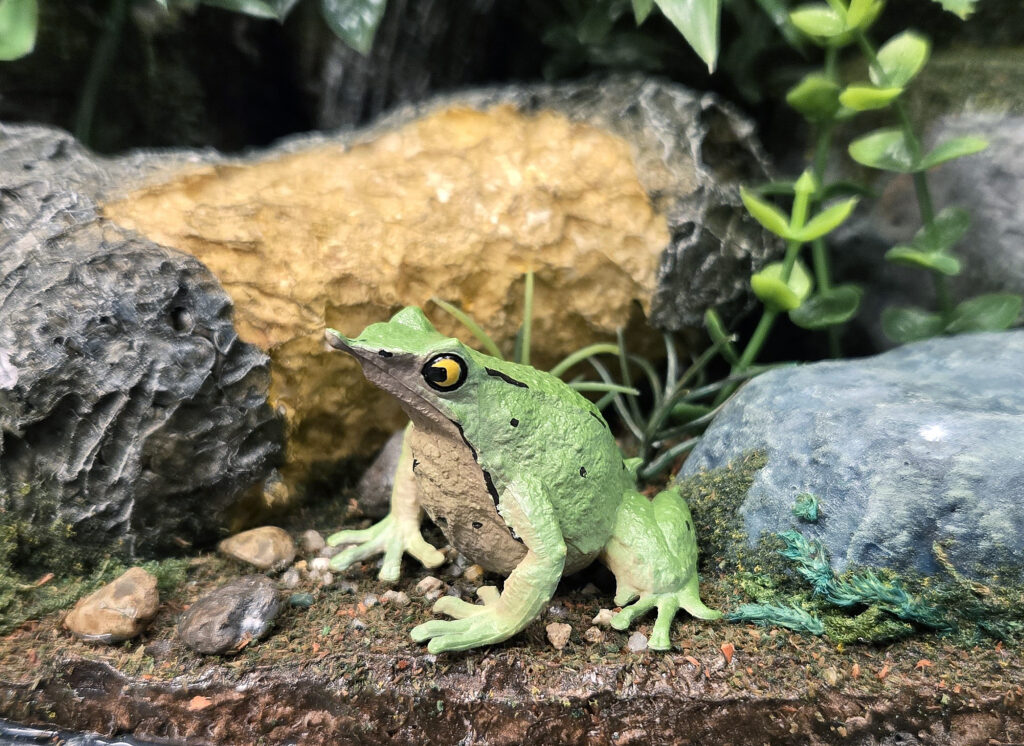
Blue Poison-Dart Frog, Dendrobates tinctorius var. azureus
- Geographic distribution: Suriname
- Habitat: Sipaliwini Savanna; usually on the ground, occasionally in low shrubs and trees
- Size/Scale: SVL approx. 4.0 cm, within scale 1:1
- Frequency of species as a toy/figure: Common, both the form azureus and the species as a whole
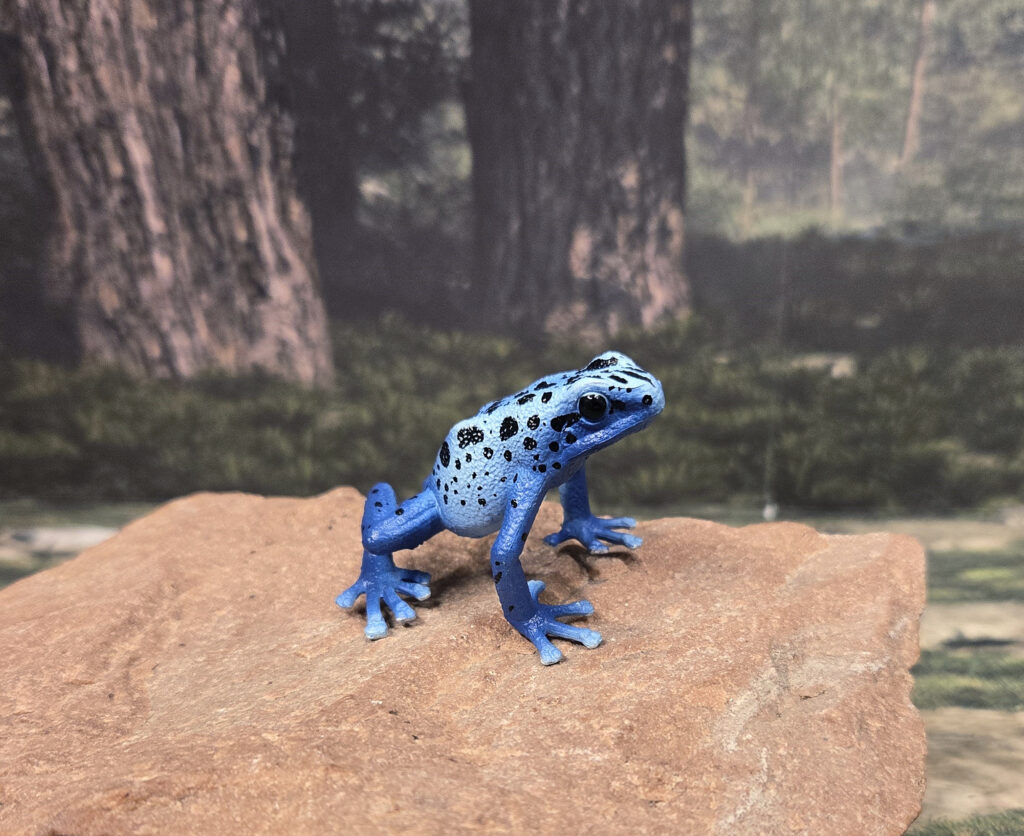
Yellow-banded Poison Dart Frog, Dendrobates leucomelas
- Geographic distribution: Northern South America
- Habitat: Guianan Orinoco drainage; usually in lowland rainforest
- Size/Scale: SVL approx. 4.0 cm, within scale 1:1
- Frequency of species as a toy/figure: Rare; previously produced by Play Visions, Safari Ltd., and a few Japanese companies
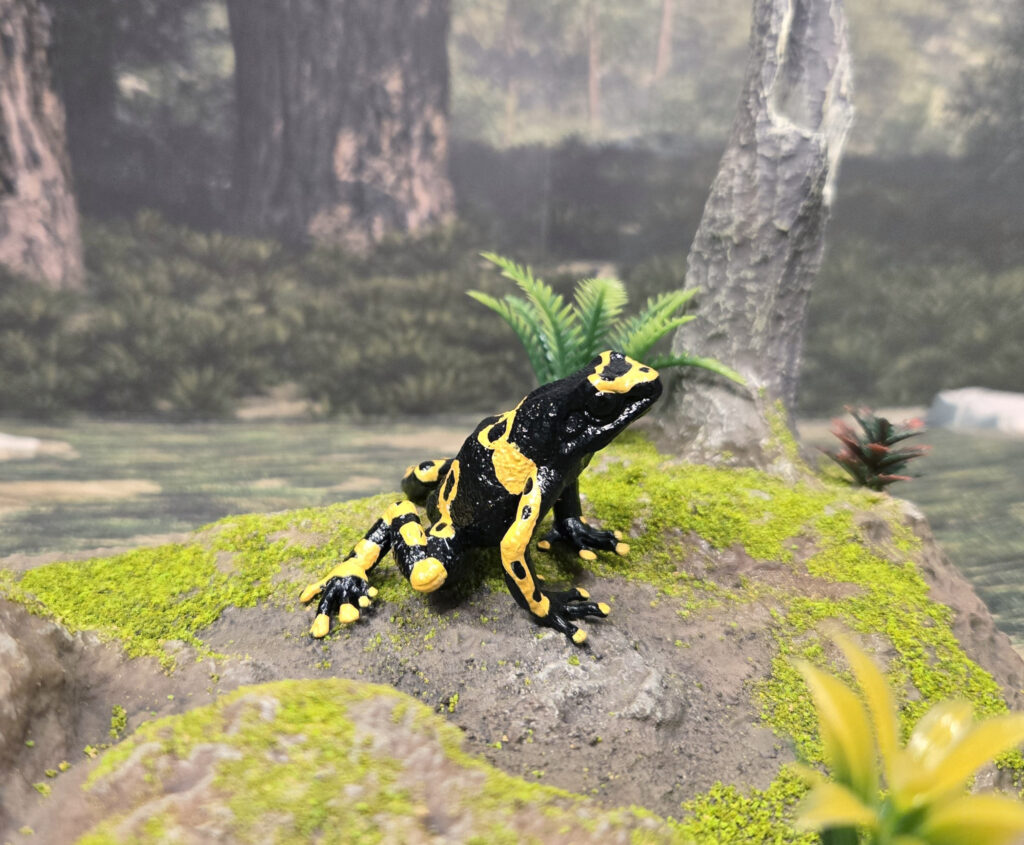
It has been an absolute pleasure introducing this set to the Blog. I am blown away by the quality of these frogs. If Toymany keeps it up, they are going to become serious competition for major Western brands! Before I know I would be receiving this set, I wasn’t sure how many I was going to buy. Only one species is new for me, and I am more than happy with the representatives I have of the other species. However, after seeing them in-hand, I am probably going to retain more than half of them, replacing their counterparts in my collection! Highly recommended, either as a set or individually from Toymany’s website. Remember to use code TMAFBM10 and receive a 10% discount when shopping directly from Toymany’s site.
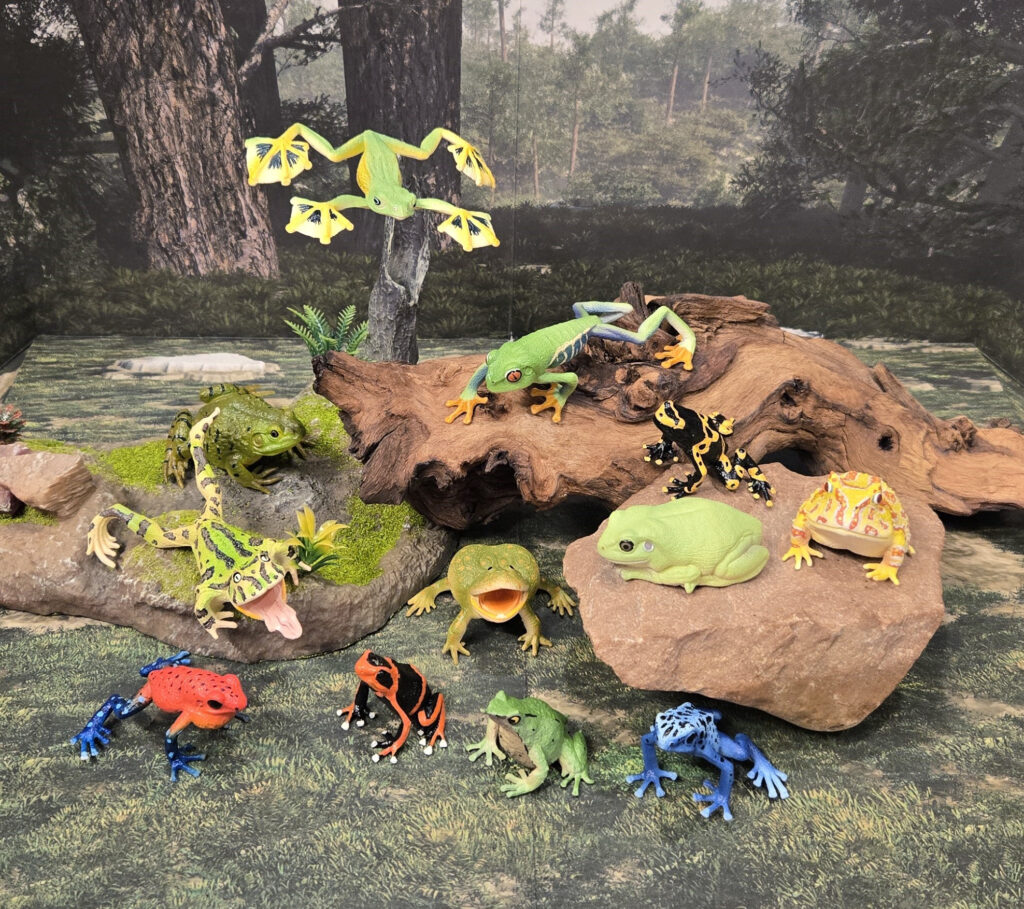
Disclaimer: links to Ebay and Amazon on the AnimalToyBlog are affiliate links, so we make a small commission if you use them. Thanks for supporting us!





I’m not big on frog figures like I am salamanders (fingers crossed for someday), but this set is amazing. Would like to see how they compare with the Colorata set in terms of size.
At first I thought the flying frog from Colorata, but nope, different species. Plus, the use of unique sculpts for each figure is worthy of praise.
That should have said “… Colorata was the same species…”
well, for what it’s worth, I am replacing three or four of the Colorata frogs with ones from this set ;-). I am on the fence about the red-eyed tree frog, however. The Toymany figure undeniably has a better sculpt and paint job, but I love Colorata’s presentation on the branch!
Size-wise, they go back and forth with Colorata’s. All of Colorata’s are essentially 1:1 and you can see from my scales above, several of these are slightly larger or slightly under 1:1. But, they are probably closest to Colorata than other companies; i.e., larger than Kaiyodo/gashapon/toob-sized figures but smaller than something one would expect in Safari’s IC line.